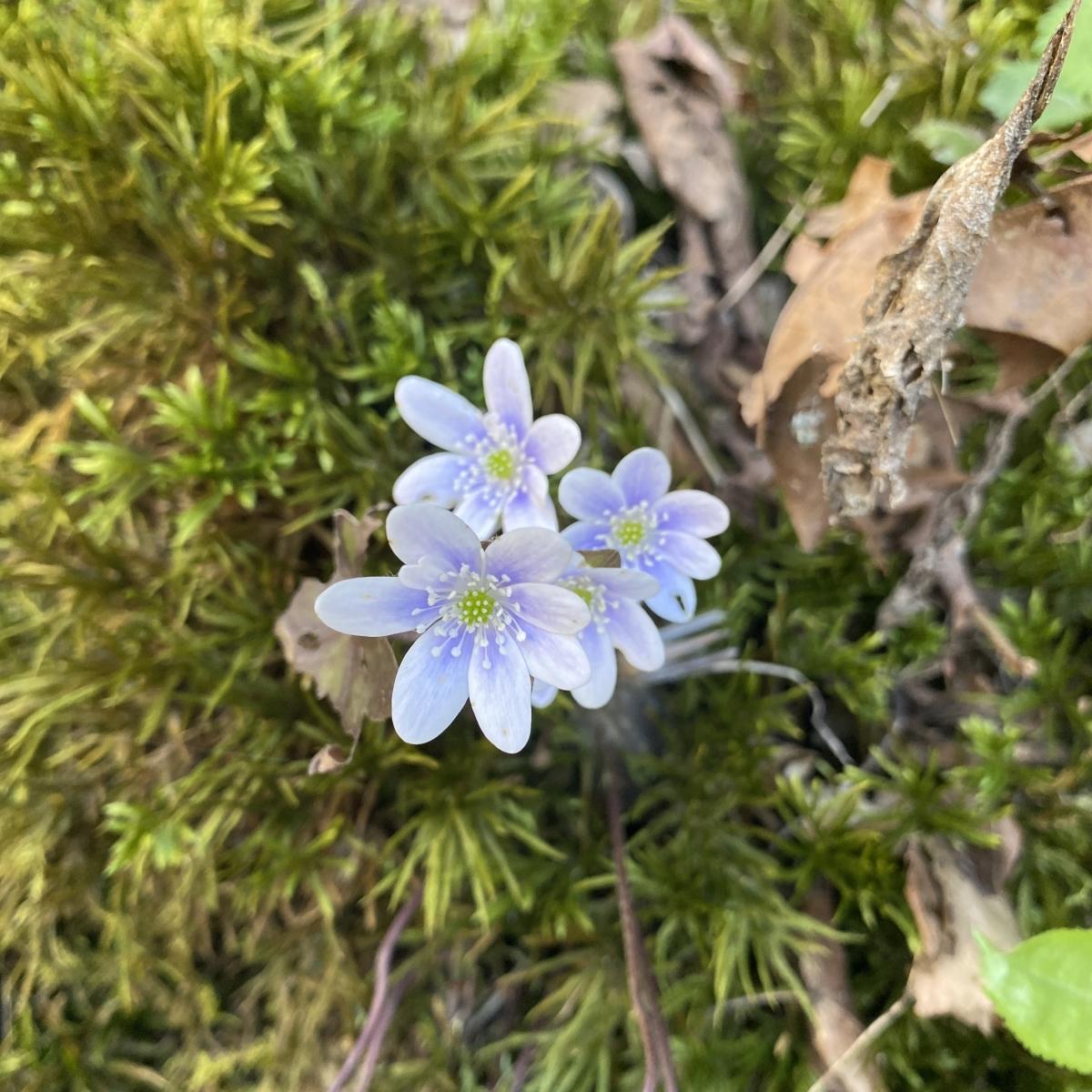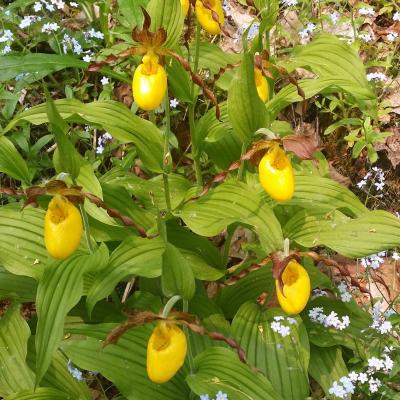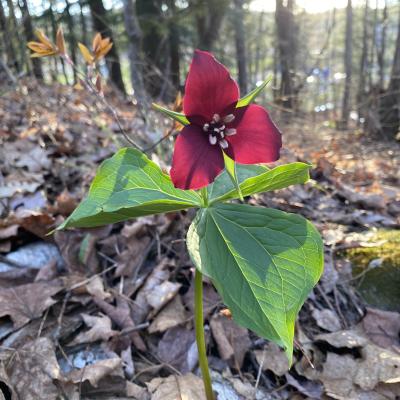
Hepatica, a relative of the buttercup, is also known as liverleaf or liverwort. (Photo: Carrie Deegan)
“April showers bring May flowers” will evoke visions of colorful tulips, dandelion-dotted lawns and fragrant lilac bushes for many in New Hampshire. But our northern hardwood forests also host a fascinating, though less widely known, floral spectacle at this time of year if you have the time and inclination to discover it.
Early blooming wildflowers, often referred to as “spring ephemerals,” are blooming across a crackly canvas of brown leaves on the forest floor. Some, like painted white or red trilliums, bloodroot and hepaticas, are nearly as showy as their domestic garden cousins; others, such as yellow trout lily and spring beauty, are delicate and lovely.
A few, like Dutchman’s breeches, squirrel corn or jack-in-the-pulpit, verge on the completely bizarre — but all of these wildflowers contribute to the diverse herbaceous layer of our deciduous forests and are enchanting to encounter.

The word “ephemeral” means short-lived, and spring ephemeral wildflowers are just that. Their flowers (and in the case of truly ephemeral wildflowers, their vegetative leaves as well) last only a couple of weeks before dying back. They have evolved to take full advantage of the “spring light window” that exists between when the soil warms up enough to sprout leaves and before the deciduous trees above them leaf out, casting heavy shade. They must emerge, photosynthesize, grow and reproduce in just a few weeks, all while the sun blankets the forest floor.
Since their window of opportunity is so constrained, many spring ephemerals take a surprising number of years to reach maturity — trout lilies can require up to eight years before flowering for the first time; great white trilliums may require as many as 10 years. Imagine the patience required if our cultivated garden flowers required that long from seed to flower!
Following Thoreau
New England’s spring ephemeral wildflowers have captivated naturalists for centuries. In the 1850s, Henry David Thoreau, the transcendentalist philosopher and poet most famous for his book “Walden,” kept journals recording his observations of spring wildflowers, shrubs and trees in his hometown of Concord, Mass. His meticulous documentation of the seasonal timing of natural phenomena is now being used to study the effects of a warming climate on some of Thoreau’s favorite plants.

Perhaps this is not surprising, and would even appear to indicate an important degree of resilience to climate warming. However, the researchers simultaneously discovered that trees were even more sensitive to warming temperatures than wildflowers, and are now leafing out nearly two weeks earlier than in the mid-1800s (4.4 days earlier per 1°C increase).
What this means is that the “spring light window” in which the wildflowers accomplish much of their annual photosynthesis and growth, is effectively shrinking.
“We had assumed that spring wildflowers would be afraid of the shade and would be more sensitive than trees to warming temperatures, if only to make sure they took full advantage of that high light window before canopy leaf out. But we found exactly the opposite,” explains Caitlin McDonough MacKenzie, one of the research team members, now with Bennington College in Vermont.
This is an example of “phenological mismatch,” where the timing of separate, but connected, ecological processes changes at different rates in response to changing climate, creating an ecological disconnect that can sometimes have far-reaching consequences.

Since the researchers’ initial discovery was confined to a single small town, they followed up by looking at data from thousands of herbarium specimens of trees and spring wildflowers from across the eastern U.S., covering a span of 149 years (1870-2019). They found exactly the same pattern: Trees are leafing out significantly earlier with warming temperatures than are wildflowers.
“We’re not sure why this is,” MacKenzie says, “but it may be that trees and wildflowers are just responding to different environmental cues. Trees are longer-lived than wildflowers, and they have the ability to recover better if, for example, they get hit with a late frost. Wildflowers, with fewer energy reserves, may have to be more cautious.”
Complicating matters, some wildflower and tree species appear more sensitive to climate warming than others. American beech and red maple, for example, adjusted their leaf out timing earlier than sugar maple or white oak.
Among the wildflowers, trout lily and bloodroot were most sensitive (have shifted earlier) while wood anemone, squirrel corn and Dutchman’s breeches shifted their timing the least. These latter, less sensitive flower species may have the most to lose with advancing tree canopy leaf-out, and are prime candidates for focusing future research.
If you get out in the woods this spring and encounter any of our native ephemeral wildflowers, consider taking a photo and uploading it to iNaturalist (available at no cost through Google Play or App store). Your photos, when diagnostic, are somewhat like digital herbarium specimens or centuries-old journal entries, with date and location data embedded. You never know when these data may be integral to help scientists unravel the complex mysteries and interactions of our natural world.
Henry David Thoreau would certainly be pleased that his journals have helped uncover early evidence that his beloved wildflowers may be under threat, and would encourage us all to experience the wonder of a spring walk in the woods.
If you don’t get out there, you’ll certainly miss out!
Carrie Deegan is Reservation Stewardship & Engagement Director for the Society for the Protection of New Hampshire Forests.
